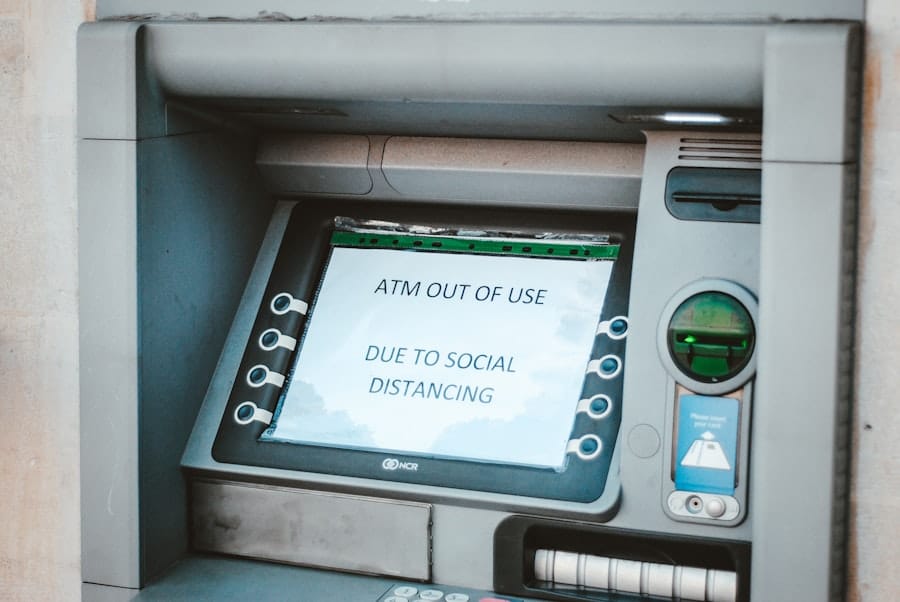The banking sector has undergone a significant transformation in recent years, largely driven by advancements in technology. Among these innovations, artificial intelligence (AI) stands out as a pivotal force reshaping how financial institutions operate. AI’s ability to analyze vast amounts of data, recognize patterns, and make predictions has made it an invaluable tool for banks seeking to enhance efficiency, improve customer service, and bolster security measures.
As the financial landscape becomes increasingly complex, the integration of AI technologies is not merely advantageous; it is essential for maintaining competitiveness and safeguarding assets. The adoption of AI in banking encompasses a wide range of applications, from customer service chatbots to sophisticated risk assessment models. However, one of the most critical areas where AI is making a profound impact is in fraud detection and prevention.
Financial fraud has evolved in tandem with technological advancements, leading to more sophisticated schemes that challenge traditional security measures. As a result, banks are turning to AI-driven solutions to combat these threats effectively. By leveraging machine learning algorithms and data analytics, financial institutions can not only identify fraudulent activities more swiftly but also anticipate potential threats before they materialize.
Key Takeaways
- AI is revolutionizing the banking industry by providing advanced tools for fraud detection and prevention.
- Understanding the different types of fraud in banking is crucial for developing effective AI solutions.
- AI detects and prevents fraud by analyzing large volumes of data and identifying patterns and anomalies.
- Machine learning plays a key role in fraud detection by continuously learning from new data and improving its accuracy over time.
- Biometric authentication combined with AI technology offers a secure and efficient way to verify customer identities in banking.
Understanding Fraud in Banking
Fraud in banking is a multifaceted issue that encompasses various forms of deceitful activities aimed at financial gain. These can range from identity theft and credit card fraud to more complex schemes such as money laundering and cyberattacks. The rise of digital banking has further complicated the landscape, as criminals exploit vulnerabilities in online systems to perpetrate their schemes.
According to the Association of Certified Fraud Examiners (ACFE), organizations lose an estimated 5% of their revenues to fraud each year, underscoring the urgency for banks to implement robust fraud prevention strategies. The consequences of fraud extend beyond immediate financial losses; they can also damage a bank’s reputation and erode customer trust. For instance, high-profile data breaches have led to significant backlash against financial institutions, resulting in customer attrition and regulatory scrutiny.
Understanding the various types of fraud is crucial for banks as they develop strategies to combat these threats. Identity theft, for example, often involves the unauthorized use of personal information to open accounts or make purchases, while phishing scams trick individuals into revealing sensitive information through deceptive emails or websites. Each type of fraud requires tailored approaches for detection and prevention, making it imperative for banks to adopt comprehensive strategies that encompass multiple facets of security.
How AI Detects and Prevents Fraud

AI’s role in detecting and preventing fraud is primarily centered around its ability to process and analyze large datasets at unprecedented speeds. Traditional methods of fraud detection often rely on rule-based systems that can be easily circumvented by sophisticated criminals. In contrast, AI employs advanced algorithms that learn from historical data, enabling it to identify anomalies and flag suspicious activities in real time.
One of the key advantages of AI in fraud detection is its capacity for continuous learning. Machine learning models can adapt over time as they are exposed to new data, improving their accuracy and effectiveness in identifying fraudulent patterns.
For example, if a particular type of fraud becomes prevalent, the AI system can adjust its parameters to recognize similar behaviors in the future. This adaptability is crucial in an environment where fraud tactics are constantly evolving. Additionally, AI can analyze behavioral biometrics—such as typing speed or mouse movements—to create unique user profiles that help distinguish between legitimate transactions and fraudulent ones.
Machine Learning and Fraud Detection
Machine learning, a subset of AI, plays a pivotal role in enhancing fraud detection capabilities within the banking sector.
These models are trained on historical transaction data, allowing them to recognize normal behavior for individual customers or accounts.
When deviations from this norm occur—such as an unusually large withdrawal or a transaction made from an unfamiliar location—the system can flag these activities for further investigation. One notable application of machine learning in fraud detection is the use of supervised learning techniques. In this approach, labeled datasets containing both legitimate and fraudulent transactions are used to train the model.
The algorithm learns to differentiate between the two categories based on various features such as transaction amount, time, location, and user behavior. Once trained, the model can be deployed in real-time environments to assess incoming transactions and provide risk scores that indicate the likelihood of fraud. This method not only enhances detection rates but also reduces false positives, allowing banks to focus their resources on genuine threats rather than wasting time on benign transactions.
Biometric Authentication and AI
Biometric authentication represents another innovative application of AI in banking that significantly enhances security measures against fraud. Traditional authentication methods such as passwords or PINs are increasingly vulnerable to breaches and social engineering attacks. In contrast, biometric systems leverage unique physical characteristics—such as fingerprints, facial recognition, or iris scans—to verify a user’s identity.
These methods are inherently more secure because they are difficult to replicate or steal. AI plays a crucial role in biometric authentication by improving the accuracy and reliability of these systems. For instance, facial recognition technology has advanced significantly due to deep learning algorithms that can analyze facial features with remarkable precision.
Banks are now implementing these systems not only for account access but also for transaction approvals and identity verification during onboarding processes. By combining biometric data with AI-driven analytics, banks can create multi-layered security protocols that significantly reduce the risk of unauthorized access and fraudulent activities.
Real-time Monitoring and Alert Systems

Enhanced Detection Capabilities
For instance, if a customer’s account suddenly experiences a series of rapid transactions from different geographical locations within a short time frame, the system can trigger an alert for further investigation.
Swift Action and Proactive Response
Real-time alert systems not only enhance detection capabilities but also empower banks to take swift action when potential fraud is identified. Automated responses can be initiated based on predefined criteria; for instance, if a transaction exceeds a certain threshold or deviates significantly from a customer’s typical behavior, the system may automatically freeze the account or require additional verification before proceeding.
Maintaining Customer Trust
This proactive approach minimizes potential losses and helps maintain customer trust by demonstrating a commitment to security.
Case Studies of AI Success in Fraud Reduction
Several banks have successfully implemented AI-driven solutions that have led to significant reductions in fraud rates. One notable example is HSBC’s use of machine learning algorithms to enhance its fraud detection capabilities. By analyzing millions of transactions daily, HSBC’s system can identify unusual patterns indicative of fraudulent activity with remarkable accuracy.
The bank reported a substantial decrease in false positives—transactions incorrectly flagged as fraudulent—allowing its fraud investigation teams to focus on genuine threats rather than sifting through benign transactions. Another compelling case is that of American Express, which has integrated AI into its transaction monitoring processes. The company employs advanced analytics to assess transaction data in real time, enabling it to detect potential fraud before it impacts customers.
By leveraging machine learning models that continuously learn from new data, American Express has improved its ability to identify emerging fraud trends while maintaining a seamless customer experience.
Future of AI in Banking and Fraud Prevention
As technology continues to evolve, the future of AI in banking—particularly in the realm of fraud prevention—holds immense promise. The integration of advanced technologies such as blockchain could further enhance security measures by providing immutable records of transactions that are difficult for fraudsters to manipulate. Additionally, the rise of quantum computing may revolutionize encryption methods, making it even more challenging for criminals to breach financial systems.
Moreover, as regulatory frameworks evolve alongside technological advancements, banks will need to ensure compliance while leveraging AI solutions effectively. The balance between innovation and regulation will be crucial as financial institutions navigate the complexities of implementing AI-driven strategies while adhering to legal requirements. In conclusion, the ongoing evolution of AI technologies will undoubtedly shape the future landscape of banking and fraud prevention.
As financial institutions continue to invest in these advanced solutions, they will not only enhance their ability to combat fraud but also improve overall operational efficiency and customer satisfaction. The journey toward a more secure banking environment is just beginning, with AI at the forefront of this transformative wave.
A related article to How AI Helps Reduce Fraud in Banking is “What Trends Are Predicted for 2023” which discusses the future of technology and its impact on various industries. To read more about upcoming trends, check out the article here.
FAQs
What is AI?
AI, or artificial intelligence, refers to the simulation of human intelligence in machines that are programmed to think and act like humans. This includes tasks such as learning, problem-solving, and decision-making.
How does AI help reduce fraud in banking?
AI helps reduce fraud in banking by analyzing large volumes of data to detect patterns and anomalies that may indicate fraudulent activity. It can also automate the process of flagging suspicious transactions and identifying potential security threats.
What are some specific AI technologies used in fraud detection in banking?
Some specific AI technologies used in fraud detection in banking include machine learning algorithms, natural language processing, and predictive analytics. These technologies enable banks to continuously improve their fraud detection capabilities by learning from new data and adapting to evolving fraud tactics.
What are the benefits of using AI for fraud detection in banking?
The benefits of using AI for fraud detection in banking include improved accuracy in identifying fraudulent activity, faster detection and response times, and the ability to analyze large volumes of data in real-time. This ultimately helps banks reduce financial losses and protect their customers from fraud.
Are there any limitations to using AI for fraud detection in banking?
While AI can be highly effective in detecting and preventing fraud, it is not foolproof. There are limitations to AI’s ability to detect sophisticated and evolving fraud tactics, as well as the potential for false positives. Additionally, AI systems require ongoing monitoring and maintenance to ensure they remain effective in detecting fraud.

